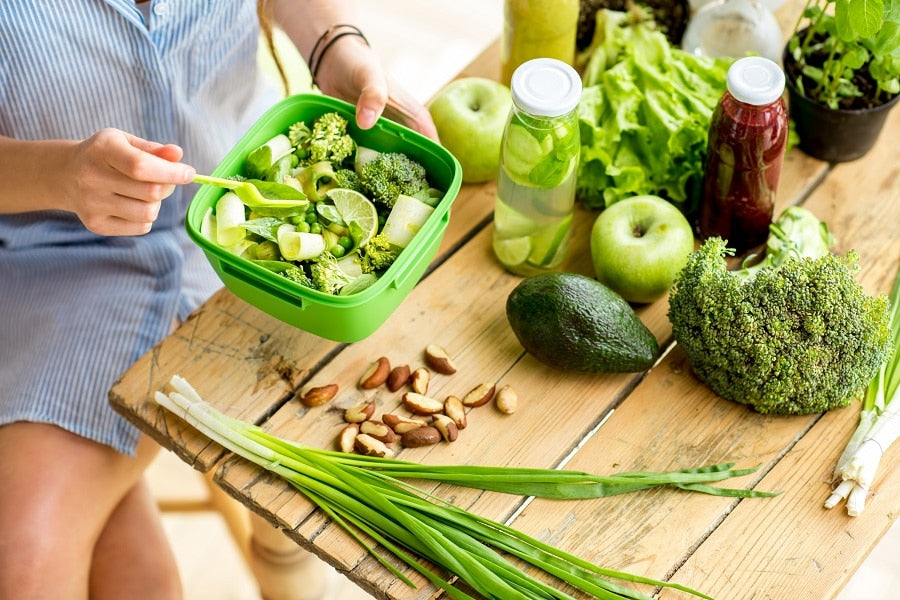
Eating Healthy on a Budget
If I we're drawing a road map to living the best life you can, I’d start with this: PUT QUALITY FIRST!
That applies to everything from relationships to how you spend your time. And it especially applies to food.
But I know that if you’re used to shopping without putting a lot of emphasis on the quality of what you’re buying, getting started can be tricky. And if you’re watching your budget, you need options for purchasing high-quality products without breaking the bank.
So I want to give you some guidelines for making informed decisions that balance great quality with price considerations.
Quality Levels for Meat (And the Budget For Each)
I always go for the quality meats because they have the most nutrition benefits. Sometimes it can get pricey, yet it’s always worth it.
Which meats should you spend more on, and which can you cut back? Well, it all depends. Let’s take a look at the different levels of quality of meat, and from there you can decide for yourself:
-
BEST $$$
- Beef: Local, pasture-raised, 100% grass-fed and finished
- Pork: Local, pasture-raised
- Poultry: Local, pasture-raised
-
GOOD $$
- Beef: Pasture-raised, grass-fed
- Pork: Organic, free-range
- Poultry: Organic, free-range
-
OKAY $
- Beef: Mainstream conventional, lean cuts with visible fat trimmed
- Pork: Avoid at all costs! Conventional pork simply isn’t healthy. If you can’t afford organic, choose another protein instead.
- Poultry: Mainstream conventional
Budget Tip: Depending on how it’s priced or what’s on sale, sometimes the GOOD option will be better value, sometimes the BEST option is better value.
What I like to do is see what’s on sale that week and buy two week’s worth. I’ll freeze half of it if I don’t cook or it in time. Then, I can enjoy the rest for later without having to buy more of it AND take advantage of the sale.
While we’re here, I want to make a note on the difference between pasture-raised vs. free-range.
On the surface, they seem like the same thing: the animal isn’t cooped up in a small cage all day with little room to roam around. However, “free-range” can often be misleading. Sometimes it means the animals are in a large space with the door open, but there isn’t really grass or a pasture to eat from. Which is why the BEST level is pasture-raised.
If you’re on a super tight budget and nothing’s on sale, go for organic free-range.
Quality Levels for Seafood
This one’s a little more simplified. You want to avoid any fish “farm-raised”--it just sounds bad, doesn’t it? Instead, opt for fish labeled wild, wild-caught, or humanely harvested. Simple as that!
Quality Levels for Produce
You want to be eating a ton of veggies in your diet. And luckily, you have more wiggle room than you do with meats. Still, quality makes a difference when it comes to nutrient and toxin levels.
Here’s how the different levels stack up:
- Ideal: Seasonal, local, organic
- Great: Local and organic
- Good: Either local or organic
- Okay: Conventionally grown, rinsed well to remove possible pesticides (but who knows if the pesticides are fully removed?)
Budget Tip: Most farmers markets have great deals on local, fresh, and organic produce. The farmers sell their vegetables directly here, which means the grocery store is cut out of the pricing equation--and the store isn’t there to mark up the prices. That’s why you can get high quality produce at lower prices at the farmers market. So find your weekly market and head on over!
Quality Levels for Eggs
Welcome to the confusing world of egg labels. This is by far the most complex of the bunch.
Yet it’s the most important, because quality eggs make a huge difference in your diet. Have you ever seen an organic, pasture-raised egg next to a conventional one? Notice the difference in yolk color--the organic egg yolk is SO much brighter and more orange (and full of nutrients)! And the non-organic egg yolk a light yellow and thinner in texture.
So, let’s take a look at all the different labels. Next time you go to the eggs section, you’ll have a better understanding of what all the labels mean.
- Pasture-raised: Chickens roam around freely and eat nutritious grasses and other plants and bugs
- Animal Welfare Approved: This regulated label is very high welfare standard reserved mostly for family farms. Chicken have continual access to shelter and pasture. No antibiotics are used.
- Food Alliance Certified: Chickens are uncaged and can access the outdoors. This is also regulated.
- Certified Organic: Chickens eat organic feed and NO antibiotics unless they require them. They are uncaged and have some access to the outdoors. Compliance is audited.
- Certified Humane: Chickens are uncaged inside barns or warehouses but may or may not be indoors. They have space to roam freely, and receive no antibiotics or hormones.
- Free Range: Chickens have access to the outdoors at least 51% of the time. Like I mentioned above, there are no restrictions on what the birds are fed and no way to verify how long they’re outside.
- No antibiotics/no hormones: The validity of this label is highly questionable. If you buy eggs labeled Certified Organic, Animal Welfare Approved, or Certified Humane--all regulated--you’re getting antibiotic and hormone-free eggs. So if you’re really worried about the two, make sure those labels are on the carton instead.
- Omega-3: Chickens are fed fish oil or flaxseed to increase omega-3 fatty acid levels in their eggs. How much are they eating? Who knows--the amount isn’t regulated.
- Natural: Super sketchy. It isn’t governmentally regulated, so anyone can slap this word on their labels.
- Cage-free: Chickens are inside barns or warehouses, and their living conditions vary greatly. NOT the same as free-range or pasture-raised.
- Vegetarian: Chickens are fed a diet free of animal byproducts. But chickens aren’t naturally vegetarians, so this diet isn’t actually best for them.
- American Humane Certified: This certifier allows cage confinement and cage-free systems, so you don’t actually know what environment your eggs came from.
- United Egg Producers Certified: Another misleading label. This certifier permits routine cruel and inhumane practices and caging.
Budget Tip: Ideally, you want to buy certified organic, pasture-raised eggs. But a dozen of those could sometimes be upwards of $9. Ouch!
A lot of the times, eggs go on sale, so keep a lookout for those. Also, you can buy eggs in bulk at the farmer's market or Costco--just make sure to check your labels. Eggs are not the products you want to compromise quality!
Quality Fats and Oils
There are SO many oils out there to chose from. Unfortunately, most of them are complete crap, and they contribute to inflammation. (I go over the list of “no-no” oils and why here)
If you choose healthy fats and oils, they can help you lose weight and look younger. Here are my best choices:
- Coconut Fats: Coconuts are an excellent source of saturated fat. Different types are coconut oil, coconut butter, coconut flakes, and coconut milk. You can use them for cooking or baking!
- Olives and avocados: Use olive oil and avocado oil for salads, and nibble on both olives and avocados on salads or as snacks. Just don’t cook with olive oil!
- Animal fats: It seems counter-intuitive, but animal fats are an excellent choice for cooking if it comes from organic, grass-fed, pastured animals. Great options are lard, tallow, butter, and ghee. Plus, they make your food taste rich with flavor! Ever had brussel sprouts cooked in lard? It’s the secret most restaurants use--but you don’t have to spend $10 on a small plate of them!
Budget Tip: Some Costco locations have large bottle of avocado oil and quality ghee. You’ll save big on these at Costco and they’ll last you awhile. As always, keep checking your labels!
Now that you know the different quality levels of different meats and produce, you can see why the higher tiers cost a lot more, and how they’re so much healthier for you.
If you want to keep saving beyond this, here are my best budget tips I live by.
Budget Tips I Live and Swear By
- Plan, plan, plan. Set aside one or two days a week to whip up some healthy meals and dishes. Slice veggies, make salsa, hard-boil some eggs, etc. to have them ready to go. Batch-cook food and freeze any food you won’t be able to eat that week. Soups, chilis, and stews can be both healthy AND budget-friendly.
- Buy nuts and seeds in bulk. These don’t go bad easily, so you don’t have to worry about using them up before they spoil.
- If you’re using a less-expensive cut of meat, use a slow-cooker or pressure cooker to tenderize the meat. It’ll taste a lot more expensive than it was!
- Make it yourself. You can make your own almond milk or almond flour. It’s really simple if you have a blender--all it requires is almonds ($6.99 per pound as opposed to $10.99 for almond flour or $8 for almond milk) and water. Also, quality ghee can cost you up to $14 for a jar (yes, really). If you get Kerrygold at your local store (about $3), you can clarify the butter yourself.
- I can always find good deals at Trader Joe’s on coconut oil, full-fat coconut milk in a can, nitrite-free bacon, ghee, olive oil, wines, dark chocolate, sparkling water, frozen bagged vegetables, fresh chopped up vegetables (saving you time, too!), maple syrup, bulk nuts, seeds, and dried fruits. They’re also always coming out with new products as the demand rises--like coconut aminos, for example. They didn’t always have that, but I’ve seen it recently at a couple different stores!
- Whole Foods has fabulous weekly deals. There’s always a deal on at least one fresh meat, and the quality is always high. Plus, their organics line is priced competitively! And their bulk section is great if you only need a little bit of something instead of a whole bag--or if you just want to try it out. You’ll find items like almond flour or coconut flour--great for baking!
- As I mentioned earlier Costco always has great prices on bulk items, like raisins, organic spinach, coconut oil, avocados, Kerrygold butter, Lime Lacroix, San Pellegrino, and lump crab meat. If you know you eat a lot of something (like eggs or bananas), get it at Costco!
- Cook with the holiday season. In May and July, get grilling meats as those tend to go on sale for Memorial Day and 4th of July. In November, get bags of cranberries or pureed pumpkin. (Just avoid the after-Easter candy sale!)
Last But Not Least, Change Your Mindset of Eating Quality Food
Finally, I want to make one last point. If you’re used to being a bargain shopper, buying quality food requires a brand new mindset.
From a money standpoint, think of it this way: You may be saving a couple dollars here and there buying non-organic meats, but think of all the health issues you could develop down the road. And think of how expensive that will be to treat. In the long run, you’re really not saving that much money, are you?
What we put into our body matters. I started prioritizing my budget around the food I ate, and that made a huge difference in how I shop.
If you want to start a healthy lifestyle and lose weight for good, check out my 80/20 Program. In it, you’ll discover eating healthy doesn’t have to taste bad or be difficult. In fact, it’s as delicious as pork chili, chicken cacciatore, and salmon with creamed spinach. Yum!
Keep thinking Big and living BOLD!








